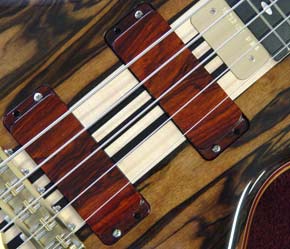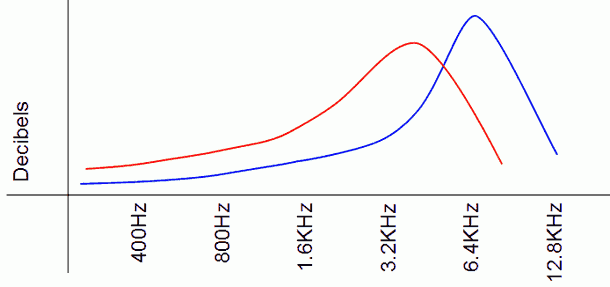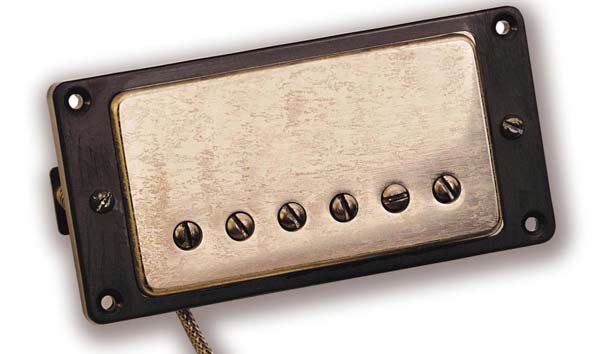The Tone Chain, Part 3 – Guitar Pickups
This discussion is limited to magnetic pickups although many of the principles will apply to other pickup systems. Pickups do not add any new harmonics. Every magnetic pickup will sense and reproduce (in electrical form) every string vibration that is present in the vicinity of the pickup. However, pickups have a variable frequency response. This means that they will transduce, or convert the sound of, some frequencies more efficiently than others.

The frequencies that are available as fundamental notes on a guitar range from around 80 cycles per second (0.08KHz) to around 1.3Khz. Most pickups have a resonant peak somewhere between 2 and 3 octaves above the fundamental frequencies. The resonant peak is the frequency at which the pickup is most efficient. The degree of variation is quite high.
Pickups can transduce some frequencies 2 or 3 times more efficiently than others. The higher notes on your guitar are not as “loud” mechanically. Although when playing a high note, the string vibrates at a higher frequency, it has less mass. The strength of current induced in a pickup depends on the mass and velocity of metal moving through the pickups magnetic field. The pickups correct this. Pickups transduce with increasing efficiency as frequency increases up to their resonant peak which is always above the highest fundamental note of the guitar.
Each pickup has a frequency response curve in a generally similar form.

Pickups do not sustain. However, a pickups that emphasises the frequencies in a suitable range that includes the fundamental note played and one octave above (the strongest natural harmonic) will tend to encourage harmonic feedback, leading to the much prized endless sustain.
Sometimes pickups are described as being harmonically rich. While it is in a technical sense perhaps misleading, at a practical level it works. These are generally pickups that have a reasonably strong response across the mid range and hopefully at least one octave above. This means that they reproduce the most desirable harmonics (3rd, 5th, octave above) fairly strongly across the entire range of notes.

Pickups do not directly affect the attack of a note. They do affect it indirectly. As higher frequencies naturally have a stronger attack, pickups that emphasise high frequencies more will increase attack.
I hope this introductory article to guitar pickups and how they work in an electric guitar is a little illuminating to readers. In the following articles about electric guitar pickups we will be looking at actual pickups and sounds and comparisons in the real world which will help people decide which are the best pickups for their guitar for the sounds and tones they wish to create.
Part 1 of The Tone Chain, is here. Followed by Part 2 of the Tone Chain, you are reading Part 3…
Article written by Mike Rose of Gemini Pickups. Please leave any comments and queries below!
